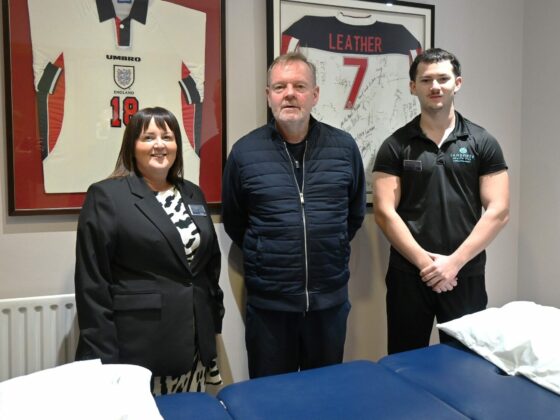
The relationship between a property’s management team and its owner is more critical—and more scrutinized—than ever. As the on-site leadership, your management company acts as the steward of the owner’s capital, entrusted with a single, primary goal: maximizing the return on their real estate investment (ROI). Gone are the days of passive ownership; today’s owners are laser-focused on profitability and constantly request more information to better understand the full business potential of their hotel.
Hotel owners’ intense focus on performance means every update, every report, and every conversation is under a microscope. It’s a high-stakes environment where, as Kelly Klocke, vice president of commercial strategy for Apple Hospitality REIT, perfectly stated at HSMAI CSC, “Every interaction that you have with ownership is an opportunity for your team to either gain confidence or lose confidence.”
The problem is that the traditional tools of communication—monthly P&L statements and static performance reports—are fundamentally too slow for this new reality. By the time an owner sees a problem on a month-end report, the opportunity to have influenced that outcome has long since passed. This lag creates a communication gap that can quickly erode an owner’s trust in your team’s ability to manage their asset proactively.
The key to winning and keeping owner confidence is to shift from reactive reporting to proactive, data-driven conversation. This is where a Hotel Business Intelligence (BI) system becomes your most valuable asset. It transforms you from a historian of past results into a forward-looking strategic partner. This post will outline how to leverage a BI system to align with your owners’ goals and build a lasting, transparent partnership grounded in trust and financial success.
First, Know Your Audience: What Does Your Owner Really Want?
Once you have the right tools, the next step is to deliver the right message. A powerful Business Intelligence (BI) system is only effective if you use it to highlight the metrics that matter most to your specific owner. Before you build your first dashboard, you must understand the owner’s investment strategy, because the fastest way to lose an owner’s confidence is to give them data they don’t care about.
Broadly speaking, ownership strategies fall into two main categories. Your BI system gives you the flexibility to tailor your story perfectly to either one.
The Long-Term Owner (e.g., a REIT)
Think of a Real Estate Investment Trust (REIT) like Apple Hospitality, or a family office. They aren’t in the business of flipping hotels. They are portfolio builders, focused on stable cash flow, long-term asset appreciation, and sustainable market share. Their priority is the consistent, predictable health of the asset over many years. When you communicate with them, your BI dashboards should highlight stability, efficiency, and market leadership.
Key Performance Indicators (KPIs) to Highlight:
- RevPAR Index: For a long-term owner, it’s not just about having a good month; it’s about consistently winning. Your BI system should prominently feature your RevPAR Index (or RGI). A score consistently above 100 shows them you’re not just riding the market’s wave—you’re outperforming it, which is the key to securing long-term market share.
- Gross Operating Profit (GOP) & Net Operating Income (NOI): Ultimately, their investment is about reliable cash flow. Real-time dashboards tracking GOP and NOI are crucial. This proves you’re running a tight ship, controlling costs, and delivering healthy, predictable profits to the bottom line—the lifeblood of their investment.
- Reliable Forecasting & Pace: Forecasting accuracy is a direct reflection of your team’s command of the business. Long-term owners rely on your projections for their own financial planning, and a forecast that is consistently accurate builds immense trust. Your BI system’s live pace and pickup reports are the proof behind the prediction. By showing them precisely how future months are booking against budget and last year, you’re not just presenting a number; you’re demonstrating why your forecast is reliable and reassuring them that a solid base of business is already secured.
The Short-Term Owner (e.g., Private Equity)
On the other side of the spectrum is the private equity firm or short-term investor. Their timeline is compressed, often just three to five years. Their strategy is to acquire an asset, inject capital for improvement, rapidly increase its value, and then sell it for a significant profit. They need to see a dramatic turnaround story, and they need to see it now. Your BI dashboards for this owner should scream growth, speed, and immediate ROI.
Key Performance Indicators (KPIs) to Highlight:
- Revenue Growth vs. Prior Year/Budget: This owner is obsessed with momentum. Your BI dashboard must spotlight aggressive top-line revenue growth. They want to see a steep, positive trend line that proves their investment thesis is working and that the hotel’s value is accelerating quickly.
- Channel Mix & Cost of Acquisition: Fast profit is about high margins. Use your BI to drill down into your channel mix. Highlighting a tangible shift towards high-margin direct bookings and away from costly OTAs is a massive win. Showing a low cost of acquisition proves you’re not just buying revenue—you’re building value efficiently.
- Post-Renovation Performance Metrics: If they’ve just spent millions on a renovation, they demand to see an immediate return. A BI system is perfect for tracking post-renovation performance. You can create specific dashboards showing the immediate lift in ADR, occupancy, and guest review scores, directly tying their capital expenditure to measurable and sellable results.
The Core of the Relationship: Your Hotel BI Dashboard
Traditional hotel operations often suffer from “data silos.” The sales team has one set of numbers in their CRM, the revenue team has another in their RMS, and the finance department delivers the final, official verdict from the accounting system weeks after the month has closed. This disconnect creates confusion, delays, and mistrust.
A modern Hotel BI system shatters these silos. It integrates with your core systems (PMS, POS, Sales & Catering) to create a dynamic, holistic view of the business. It’s not just another reporting tool; it’s a single source of truth that aligns the entire on-property team with ownership in real-time. Everyone—from the Director of Sales to the General Manager to the owner logging in from their own office—is looking at the same live data.
This shared visibility is the foundation of a transparent and trusting relationship.
Here’s what it provides at a glance:
- Real-time Revenue & Profitability: Forget waiting anxiously for the month-end P&L. A BI dashboard lets you see precisely where your revenue and key profit indicators stand today. If bar sales are down for the week or labor costs are trending high, you can see it and act on it immediately, rather than waiting a month. This ability to course-correct in the moment is exactly what owners want to see.
- On-the-Books (OTB) Pace: This is your forward-looking radar. With a single click, both you and your owner can instantly see how future periods are pacing against budget, forecast, and last year. There are no more end-of-month surprises when you miss the budget because you can see the booking trends—or lack thereof—weeks in advance, giving you ample time to react.
- Market Segmentation: To truly prove you understand the business, you need to answer the “why” behind the numbers. A BI system allows you to instantly drill down into which segments are performing well (or poorly). Are you growing your high-value corporate segment as planned? Is transient leisure softening unexpectedly? This level of detail shows you have a deep, strategic command of the business drivers.
- Channel Performance: It’s not enough to know how much revenue you’re making; owners want to know how profitably you’re making it. A BI dashboard visualizes your channel performance, clearly showing which distribution channels—be it your brand.com website, OTAs, or GDS—are the most effective and which ones have the highest cost of acquisition. This demonstrates your focus on driving bottom-line results.
The cumulative effect of this real-time visibility is transformative. It eliminates surprises, which are the number one killer of owner confidence. Your conversations shift from reporting on what already happened to strategizing about what to do next. You’re no longer just a manager reporting on history; you’re a proactive partner, armed with the same live data as your owner, collaborating on the future.
Turning Bad News into a Trust-Building Opportunity
The single most significant test of an owner-manager relationship comes when things go wrong. Mistakes and unforeseen challenges are a part of the business, but the defining moment is how you respond. Concealing a problem or hoping it will magically fix itself by the end of the month is a sure way to destroy credibility.
This is where a BI system allows you to fundamentally change the dynamic. Instead of waiting, hoping, and delivering bad news after the fact, you can identify, diagnose, and act—turning a potential crisis into a moment that builds immense trust.
Let’s walk through a common scenario: It’s mid-August, and your BI dashboard is flashing a warning sign. The live forecast shows that summer demand has been softer than anticipated, and you’re now projected to miss the month’s revenue budget.
Here is the proactive, BI-powered response:
Step 1: Identify the Trend Early
Instead of relying on a gut feeling or waiting for the month-end report, your BI system flags the unfavorable variance against your budget in real-time. The trend is undeniable and visible to your whole team weeks before the end of the month. This early warning is your signal to get ahead of the problem.
Step 2: Diagnose the “Why”
With the problem identified, you use the BI dashboard to move past guesswork. Is it an industry-wide downturn or something specific to your property? You drill down with a few clicks. The data clearly shows that your group and corporate segments are holding steady, but the shortfall is coming almost entirely from a drop in high-ADR transient leisure bookings. You now have a specific, data-backed cause.
Step 3: Assemble a Multi-Disciplinary Action Plan
You call a meeting with your commercial leaders, with the BI dashboard projected on the screen as your single source of truth. The goal is to build a coordinated plan that leverages every part of your commercial team.
- Revenue Management: “Our BI shows leisure pickup is down 15% for the remainder of the month. We have analyzed all available offers on the shelf. We are launching a targeted OTA promotion and a ‘stay three nights, save 20%’ discount on our direct channels. We’ve also adjusted our pricing strategy for the next 30 days to be more competitive.”
- Sales Team: “We’ve reviewed the lost and turned-down pipeline from earlier this year. We are re-engaging with three local groups that were a fit but were hesitant about the price. We are also launching an e-blast to our corporate client list with a special ‘End of Summer’ offer for their traveling employees.”
- Marketing & Distribution: “We have partnered with our OTA market managers to ensure our visibility is maximized and all promotions are active. We are also launching a geo-targeted social media campaign focused on drive-in markets to capture last-minute weekend bookings.”
Step 4: The Conversation with Ownership
Now, you proactively contact the owner. Instead of a defensive call on the 5th of next month, you have a strategic conversation today.
“Hi [Owner Name], I’m calling to give you a proactive update on August. Our BI system has flagged a revenue shortfall risk of approximately $X against the budget. The data indicate this is due to a market-wide softening in transient leisure demand. We have already met as a team and have implemented a coordinated three-point plan across revenue, sales, and marketing to mitigate this loss. We will be monitoring the results of these actions daily on the dashboard and I will report back on our progress next week.”
Notice the difference. You haven’t presented a vague problem; you’ve given a complete business case: the situation, the data-driven reason, the coordinated action plan, and a commitment to accountability. You have replaced bad news with a powerful demonstration of command and control, building your owner’s confidence in the process.
From On-Property Expert to Trusted Strategic Partner
The relationship between hotel management and ownership has evolved. Today’s owners demand more than just a monthly report; they require a real-time understanding of their investment and a clear, data-driven strategy for maximizing its profitability.
As we’ve explored, a modern Hotel Business Intelligence system is the key to meeting this demand. It fundamentally transforms your role. You are no longer just an on-property manager reporting on what happened last month. You become a true strategic partner, using live data to collaboratively shape what will happen next month, next quarter, and next year.
Ultimately, building unshakable owner confidence comes down to three things: transparency, accountability, and a data-driven plan. A BI system is the engine that powers all three. It delivers the objective, black-and-white metrics like RevPAR Index and GOP that owners need to see. Still, more importantly, it enables the subjective qualities, like a well-articulated strategy and proactive communication, that earn their trust.
The takeaway is simple. Please don’t wait for your owner to ask the tough questions about a soft month or a missed forecast. Implement the tools that allow you to bring them the answers first. It’s the surest way to build a solid, long-lasting, and profitable relationship.



